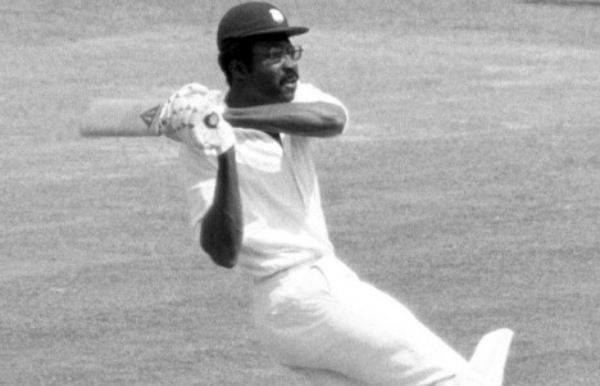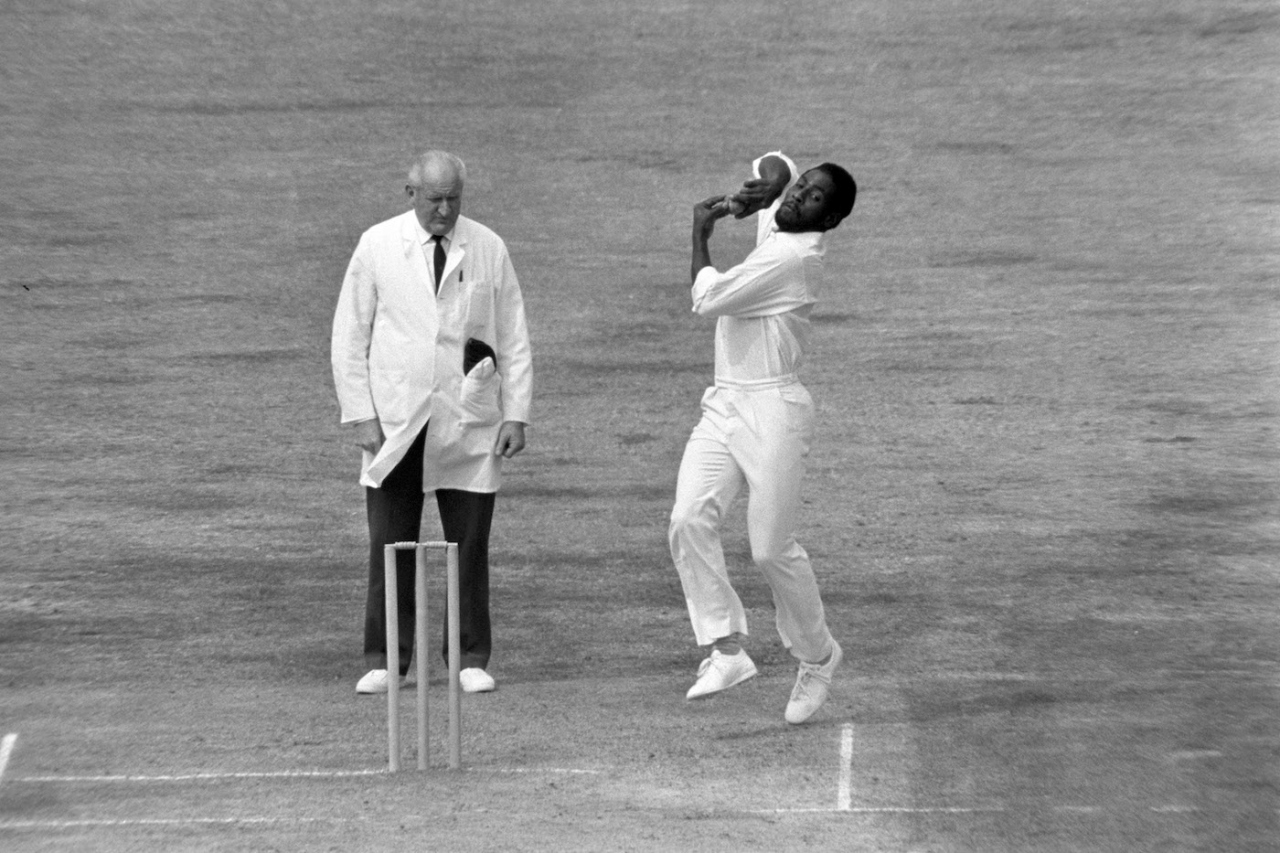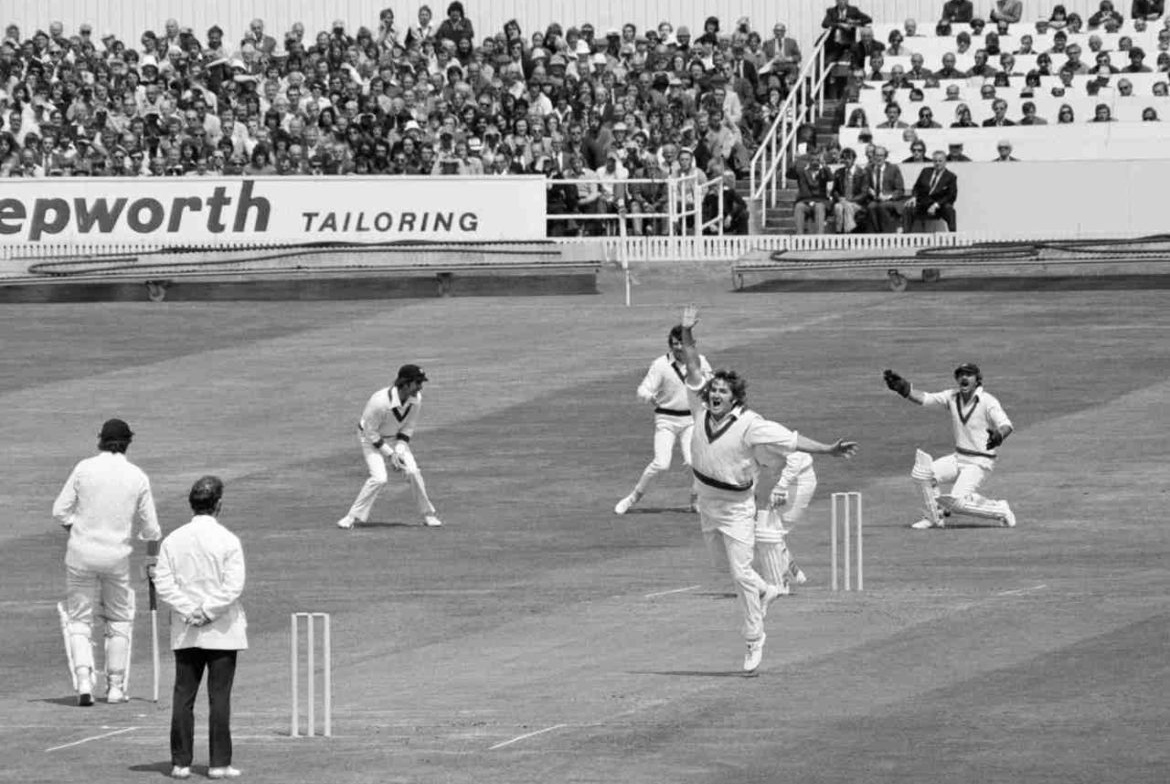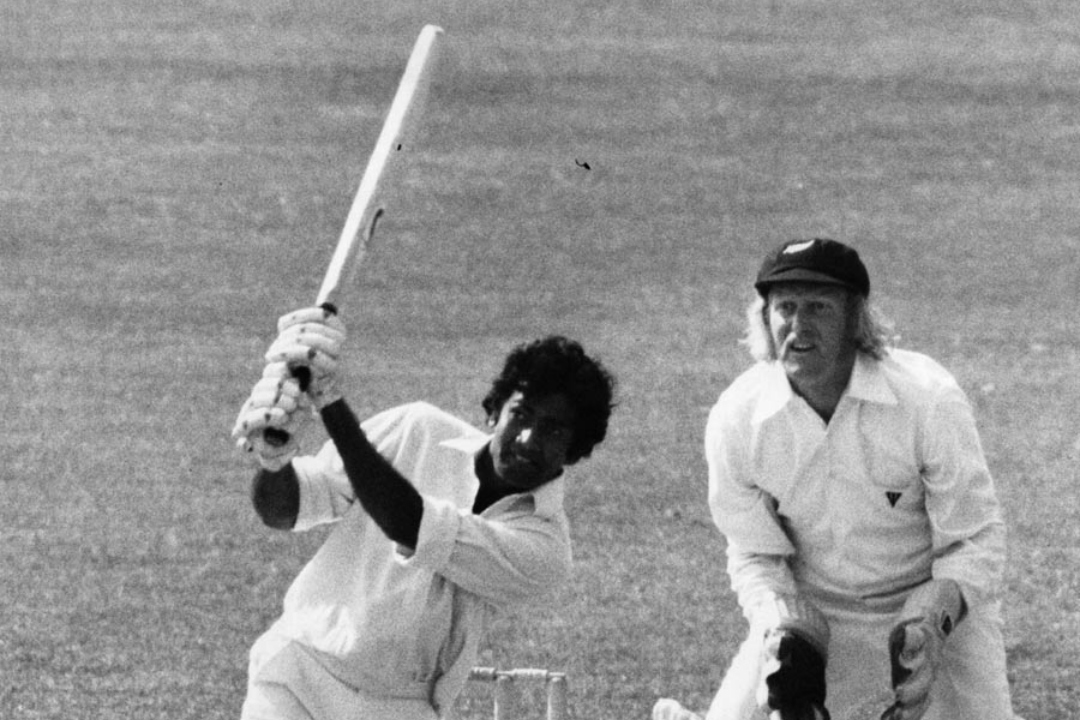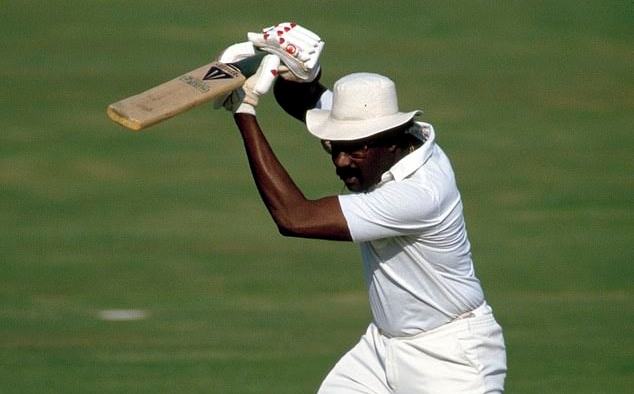The following is the third part of Owen Thompson’s recall of that unforgettable summer in 1976 which ushered in the West Indies cricket team’s glory years:
There was one final seminal moment to that summer. The Fifth Test, from 12 August to the 17th, was a metaphor in two halves.
On Day One and Day Two, IVA Richards held court, carving out a flawless 291 as West Indies amassed 687 for 8. From the minute he swaggered to the crease (after Gordon Greenidge fell in the third over, lbw to Bob Willis) and struck the second ball he faced through mid-wicket for four—taking the liberty to walk across outside his off-stump to do so—there was a certain inevitability to the next two days. IVA never looked like getting out.

(Copyright Patrick Eagar Collection via Getty Images)
All of Bob Willis, Mike Selvey, Derek Underwood, Geoff Miller, Tony Grieg and Bob Woolmer seemed to be paying lip service to bowling, simply waiting for the 24-year-old Antiguan to fall via the only route that appeared possible—fatigue.
When he ended the first day 200 not out, with West Indies 373 for 3 and Clive Lloyd’s sights clearly set on getting as many as possible before sticking England in for a nasty hour or so before the close, it was lost on no one that with Viv resuming on Day Two after a good night’s rest and presumably seeing the ball as big as a breadfruit, Sir Gary’s 365 not out, which had stood since 1958 as the highest individual innings in Test cricket, could be under threat.
But when, deep into the second session of Day Two, IVA did eventually play a tired prod at an innocuous Greig off-cutter and succeeded only in dragging the ball on to his stumps, Sobers’ landmark remained intact. Richards had, however, set a new mark for runs in Tests during a calendar year: 1,710.
On Days Three, Four and Five, Michael Holding got down to the business of hitting English stumps. The world was about to witness 14 for 149. In 53 overs and four balls. 33 overs deployed across seven spells in the first innings 8 for 92.
Running from a short burst before the close on the Friday evening through all of Saturday into opening again on the Monday morning, then a spell either side of lunch. Six bowled, two lbw.

The second innings haul was no less impressive. Five spells disaggregated as follows: a short burst before the close on the Monday evening, opening proceedings on the Tuesday morning, either side of lunch, then immediate post-tea.
In all, a wicket every three overs and four balls across both innings! Nine bowled, three lbw, two caught in the arc. Returns that suggest the English batsmen were prised out by sheer pace. On the slowest and flattest of the Test surfaces that summer.
Having quickly assessed the docile nature of the Kennington pitch, ‘Mikey’ decided to take the bouncer out of the equation, challenging anyone 22 yards away from him with a bat in his hand to cope with speed through the air. On average, every 22 balls, an Englishman was found to be too slow on the draw.
Mikey gave himself the minimum amount of rest between spells, pacing his efforts perfectly from Saturday to Tuesday, rarely dropping below 90 mph in the course of those 53 overs and 4 balls.
Denis Amiss, who scored a first innings 203, admits to never having genuinely ‘seen’ much of what Mikey propelled at him. Wagering that Holding had chosen to dispense with the bouncer intimidation factor, he resolved to focus on the bowling arm and ‘play line’, in keeping with the discernible point of delivery—anticipating that he was never going to have time to follow the trajectory in real, ‘naked-eye’ terms.

The experienced Amiss had reckoned that, on a surface so flat and true, against a Holding so unerring and so consistently quick, if he could manage to get into position a second before the ball left the hand he stood a better than even chance of middling most everything. He managed to do that for nigh on eight hours, batting his way, largely on instinct, to a quite impressive double century (332 balls, 28 fours).
Regrouping on the rest day, during which he worked out that Amiss was shuffling a touch too far across before delivery and leaving his leg stump exposed, Mikey decided to modify his line of attack upon resumption on Day Four, choosing even to go around the wicket at times. That change of tack succeeded in disrupting Amiss’ consistent ‘vision’ of line. Towards the end of his first spell that morning, the Jamaican speedster hit the Warwickshire opener’s leg pole.
That 3-0 triumph that ended the summer while Bob Marley’s lyrics began to impact the world was a poignant metaphor of many of the civilisational challenges the West Indian nation has always faced.
All these years later, yours truly is in a better position to grasp what the events of that summer had really meant. I was in my mid-teens. Jamaica and Trinidad and Tobago were turning 14 that August, in the flush of adolescence as well.
Mikey, Viv, Andy Roberts and co trod the stage with pomp and fearlessness, like forthright creatures confronting preponderant self-awareness as the major life issue.

The transition towards adulthood can often prove as sweet as it can be painful. The one certain thing is that childhood is being definitively left behind. Making one’s way in the world as well as making sure one is being seen to be making one’s way become absolutely paramount, as Nature’s creatures are all the more powerfully impelled by the indomitableness of that force.
Making an unequivocal statement about assertiveness during the silly goose years is imperative. Marley sang, Viv, Mikey and Andy batted and bowled, Hasely Crawford and Donald Quarry sprinted and Alberto ‘El Caballo’ Juantorena galloped. All were making robust statements about the capacity for the exceeding of * self.
When, after exulting in the triumphs of the summer of cricket, we returned to school in September, now formally sixth formers, we began to really listen to, and meaningfully assimilate, the true tonnage of Rastaman Vibration.
There was no shortage of revolutionaries or romantics among us. There were those more driven by Marley’s call for activism and rebellion and those more touched by his pleas for love, magnanimity and forgiveness.
There were those overly thrilled by the newness and originality of the album’s musicality and those more given to philosophical and religious meanderings. The captivating voice of someone speaking in a Jamaican accent of a rather singular God, far removed from religious parameters less unfamiliar to us, really did give us pause.

Jah, Rastafari, Babylon being given generous airplay, entertained in the realms of respectability and validity. It was, indeed, a whole new ball-game.
Owen Thompson, cricket and calypso lover and Atlético de Madrid fan, was born in Tobago, went to school in Trinidad, worked in Portugal, lived for decades in France and Spain and travelled widely in Europe, making him a writer with a world view.
 Wired868 Wired868 for smart sport news and opinion
Wired868 Wired868 for smart sport news and opinion

